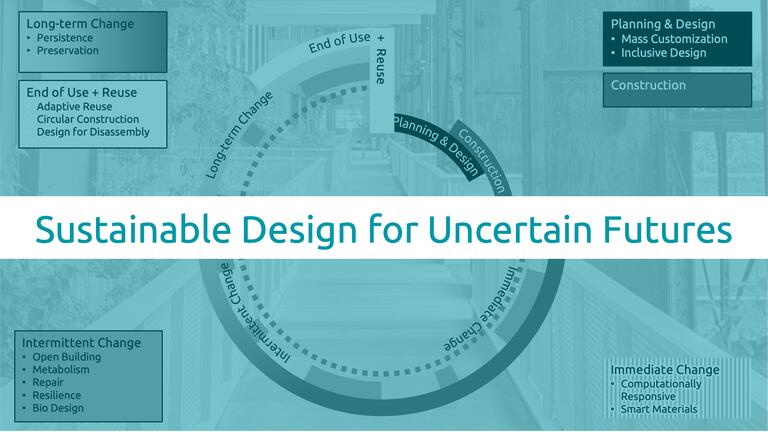Sustainable Design for Uncertain Futures
Throughout the semester we explore various types and scales of change. Each week we review various concepts, such as mass customization, computationally responsive environments and facades, open building, adaptive reuse, metabolism, persistence, preservation, circular economy, design for disassembly & adaptability (DfD&A), repair, design for inclusion, resilience, bio design, and smart materials. Students will engage with the content through written reading responses, group discussions, precedent studies, and will apply these strategies to a project of their own choosing.

Image by Joshua Lee
Throughout the semester we explore various types and scales of change. Each week we review various concepts, such as mass customization, computationally responsive environments and facades, open building, adaptive reuse, metabolism, persistence, preservation, circular economy, design for disassembly & adaptability (DfD&A), repair, design for inclusion, resilience, bio design, and smart materials. Students will engage with the content through written reading responses, group discussions, precedent studies, and will apply these strategies to a project of their own choosing.
course goals
Compare many ways architects have attempted to deal with change in the past.
Analyze the effectiveness of specific precedents over time.
Diagram how anticipated and unanticipated forces of change impact architecture.
Design innovative protean solutions of their own.
assessment structure
Attendance, Participation, and Discussions; Reading Reflections; Precedent Research; Individual Projects
learning resources
Each student will be granted a loaner copy of:
Lee, Joshua and Joseph Murray. 2025. Sustainable Design for Uncertain Futures: Dialogues on Time-based Architecture. Wiley.
Additional articles will be uploaded to Canvas.